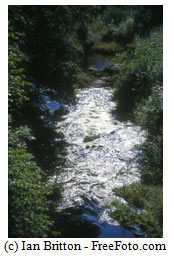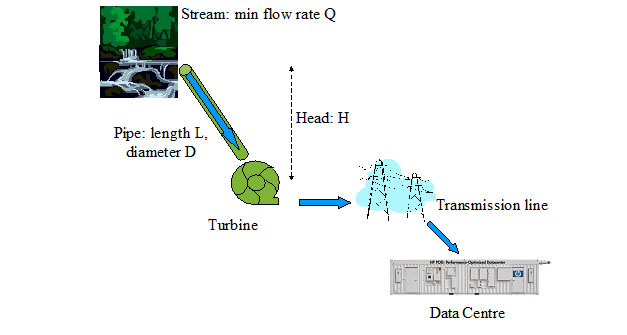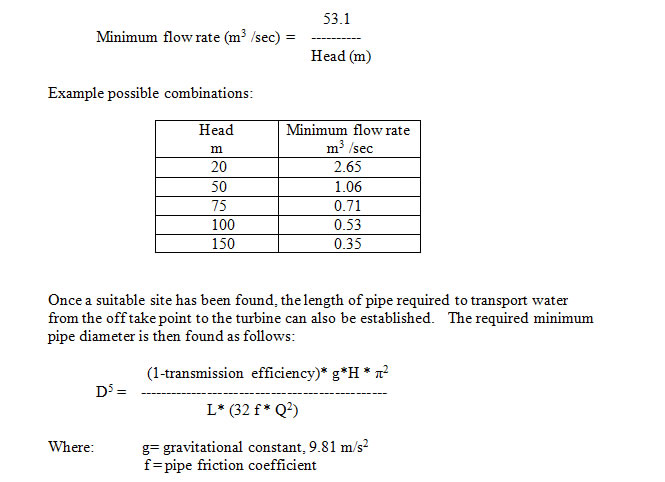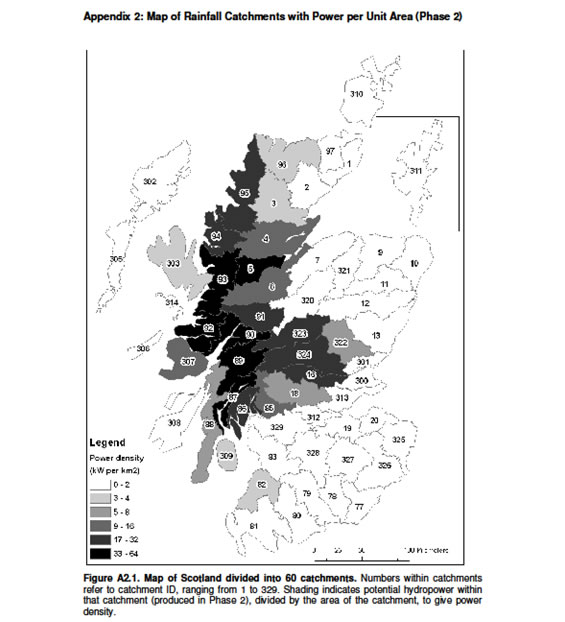Data Centres and Renewable Energy Project


Hydro-electricity

Producing electricity from moving water is the oldest established renewable electricity technology. Moving water turns a turbine whose circular motion generates electricity. The technology is robust, well developed and needs little down time for maintenance.
Principle of operation
- Francis or Kaplan turbine rated at 320kWe
- Pipe to channel water to the turbine
- Transformers and 33kVA transmission lines to bring the power to the nearest road / data centre site

Requirements
A catchment area with the required combination of head and flow rate given by

For example, for a 50m head, and 500m long pipe, the minimum pipe diameter is 680mm.
Key assumptions
Residual flow, not abstracted from stream = 5% of minimum flow
Pipe material: steel, roughness 0.10mm (1)
Overall efficiency: 65%
- pipe transmission efficiency: 85%
- turbine efficiency: 80%
- generation efficiency: 95%
Calculations are in the attached spreadsheet.
Issues
- It is unlikely that a suitable location will be very close to the data centre as this must be beside a suitable road. A transmission line will be needed to take electricity from the turbine to the data centre. This must be buried rather than overhead because of the strict availability requirement – adding to expense

- the potential resource is highly geography specific – if there is no suitable site nearby, it is not an option
- Undeveloped hydropower capacity in Scotland is shown in the map above. This is taken from a recent government sponsored study (2). Details of individual schemes can be obtained from Nick Forrest Associates (3). For the example of Shetland this lists 308 possible sites capable of generating 6.1MW.
- runoff flows fluctuate during the year, so unless there is a large enough stream, a weir may have to be built to ensure that the required flow is available all year.
- Screens will need to be placed at the intake and outflow points in order to protect the turbines from debris, and also to prevent damage to fish. The head loss due to the screens has not been allowed for in the above calculation.
References used in this page:
(1) Twidell, J; Weir, T: 2006: Renewable Energy Resources, 2nd ed, Taylor & Francis, pg 38
(2) Scottish Hydropower Resource Study Final Report 2008; For Scottish Government by Nick Forrest Associates /SIS Tech/ Black & Veatch; 26th August 2008
(3) Nick Forrest Associates: http://www.nickforrestassoc.co.uk/